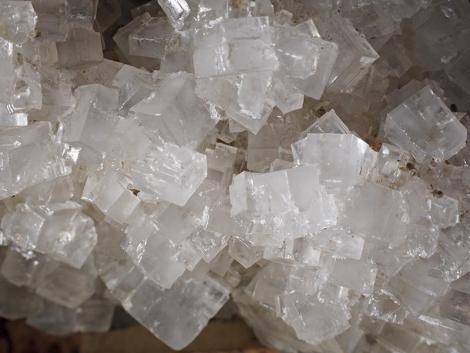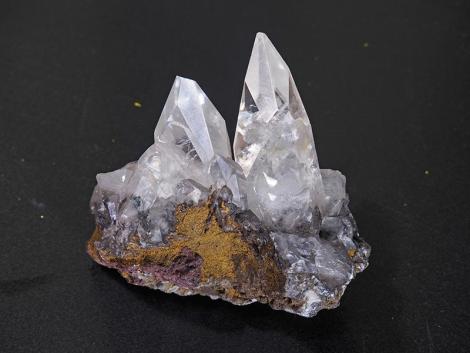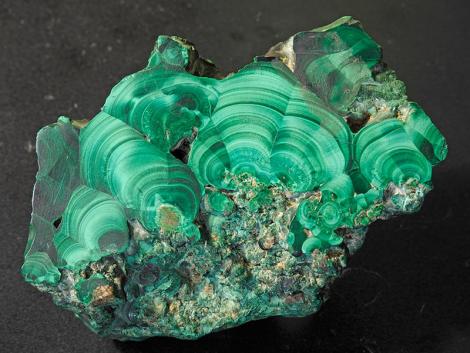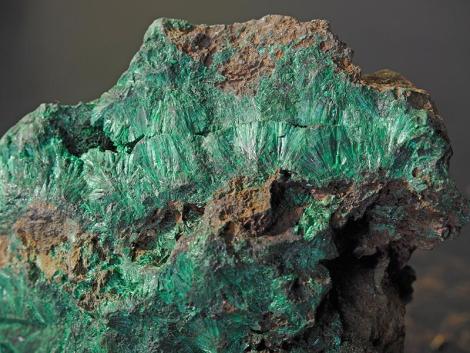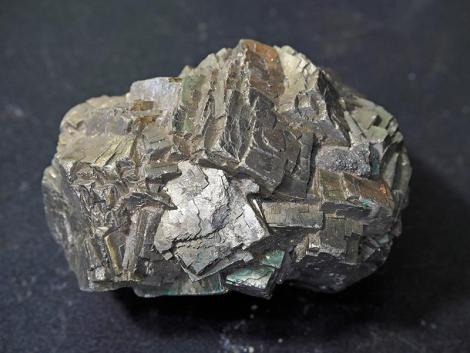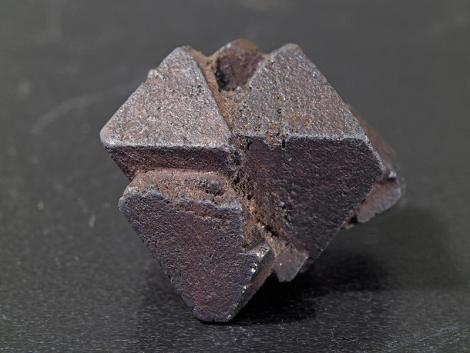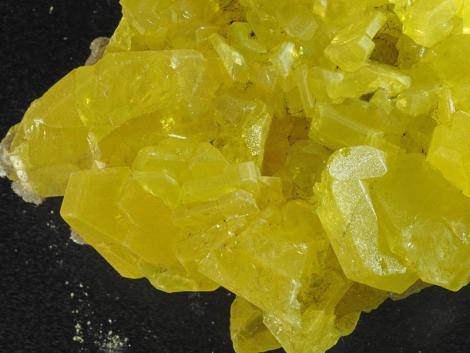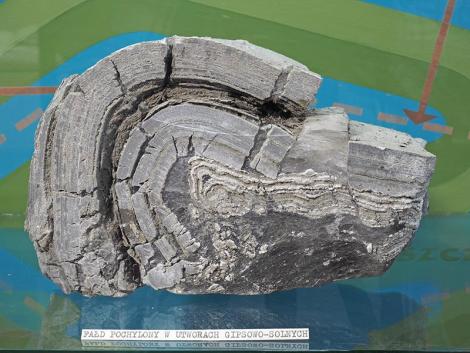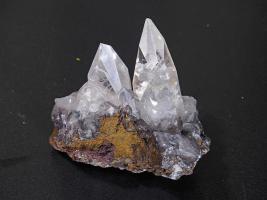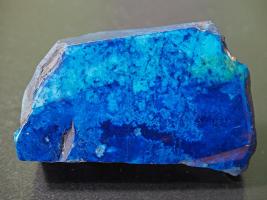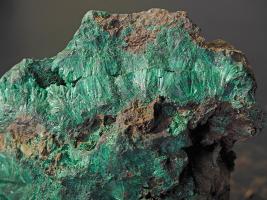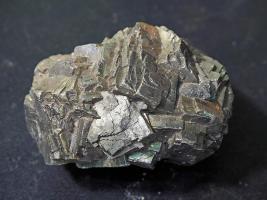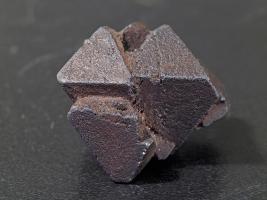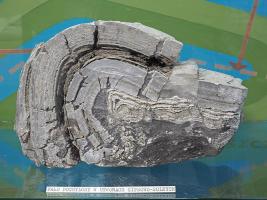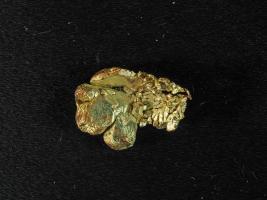
The geological and mineralogical collections located in the Geological Department of the Nature Education Centre of the Jagiellonian University comprise in the most part the collections transferred from the Geological Museum of the Institute of Geological Sciences.
These include about 250 collections containing nearly 20,000 fossil specimens, 16,000 mineralogical specimens, several hundred petrographic specimens and 27 collections of cuttings, which most often serve as complementary material to the rock material collections.
In 1782, on the initiative of Professor Jan Jaśkiewicz (1749-1809), head of the Chair of Natural History and Chemistry of the Royal Academy, the Mineralogical Museum was established within the structures of the Cabinet of Natural History. It housed a collection of minerals, rocks and fossils until 1886, when the Mineralogical Museum was divided into two branches – mineralogical and geological. The newly established Geological Cabinet took over the palaeontological and geological collections, as well as some of the petrographic collections.
The collections were brought back together in the 1970s, when the Geological Museum of the Jagiellonian University was established in the new seat of the Institute of Geological Sciences of the Jagiellonian University at Oleandry 2a.
The oldest preserved exhibit is a collection of minerals, fossils and rocks from Europe, purchased in 1810 from the former head of the Chair of Natural History, mineralogist and traveller Baltazar Hacquet. Currently, it constitutes the largest historical collection of minerals in Poland, comprising about 2,000 specimens.
Another historical exhibit is the collection of minerals donated to the University in 1814 by the Dean of the Krakow Chapter, Michał Sołtyk, comprising mainly products made of minerals represented by ornamental stones from the silica group: quartz, chalcedony and opal.
The specimens collected since the 19th century were acquired mainly by purchasing goods from geological warehouses and mineralogical exchanges in Europe (including A. Krantz’s store in Bonn, as well as mineralogical warehouses in Heidelberg, Freiberg, Munich and Vienna). Many of the specimens were acquired thanks to the donation of private collections by people who worked at the Jagiellonian University or who were associated with the institutions, including Professors Alojzy Alth, Józef Grzybowski, Ludwik Zejszner, Władysław Szajnocha, Marian Książkiewicz and many others. Numerous specimens were also donated by the Geological Institute in Vienna (1857), the management of the salt mines in Wieliczka, Bochnia and Kałusz, directors of hard coal mines in Siersza, Jaworzno, Libiąż and Dąbrowa Górnicza, as well as managers of zinc and lead ore mines in Trzebinia. The ranks of donors also included a large group of private individuals of various professions, mainly engineers and doctors.
The 19th-century collections preserved to this day include:
- Ignacy Domeyko’s collection donated to the University between 1853 and 1884, comprising rare minerals, mainly ores, from Chilean deposits. Their scientific and historical value is increased by the attached sheets containing notes from the chemical analyses carried out by the author;
- Victor Zepharowicz’s collection of several hundred minerals, including ores, carbonates and silicates. The specimens were collected mainly in Europe;
- Collection of Michałowski, an amateur collector, made up of several hundred specimens, including rare meteorites;
- Several collections of invertebrate fossils from the Paleozoic and Mesozoic, collected mainly in Podolia, Bukowina, Eastern Galicia and the Krakow region, donated by Alojzy Alth (professor of mineralogy at the Jagiellonian University in 1862-1886).
The list of noteworthy collections from the beginning of the 20th century include:
- a collection of minerals and rocks from the Vesuvius donated to the University in 1912 by the then head of the Department of Mineralogy, Professor Józef Morozewicz;
- a collection of synthetic minerals from the 1930s, purchased and perhaps partially created by the employees of the Department of Mineralogy;
- collection of minerals from US and Canadian deposits brought in 1932 by Professor Ludwik Chrobak;
- a collection of optical instruments (mainly microscopes and goniometers) as well as spectroscopes from the 1920s and 1930s, supplemented with modern instruments (microscopes, X-ray diffractometer etc.).
In the 1970s, all the specimens were assigned to three sections, which was reflected in the way the collection were enumerated. These were:
- mineralogy and petrography department (M), which contains a structured collection of minerals, meteorites, historical mineralogy collections and optical instruments;
- dynamic geology (D), which showcases all kinds of rocks and processes occurring in them, as well as sedimentary structures;
- palaeontology and stratigraphy (P), which contains collections of fauna and flora fossils from different geological periods, as well as trace fossils.
The Nature Education Centre of the Jagiellonian University also hosts several collections, including “Trace Fossils” by Professor Marian Książkiewicz (father of Polish sedimentology and the first head of the Institute of Geological Sciences of the Jagiellonian University), as well as “Sedimentary Structures” by Professor Stanisław Dżułyński, a world-famous sedimentologist and father of experimental sedimentology, along with the collections which constitute the documentation material for scientific works carried out at the Institute of Geological Sciences of the Jagiellonian University.

